Girdled Knight
One of the grey skinned knights, but it is surprisingly easy to identify because of its cottony ring around its stem (which is not a common feature amongst the species of genus Tricholoma).
| Mushroom Type | |
| Common Names | Girdled Knight, Marchog Gwregysog (CY), Gąska Wierzbowa (PL), Öves Pereszke (HU) |
| Scientific Name | Tricholoma cingulatum |
| Synonyms | Armillaria cingulata, Agaricus cingulatus |
| Season Start | Jun |
| Season End | Oct |
| Average Mushroom height (CM) | 5–8 |
| Average Cap width (CM) | 3–6 |
Cap
3–6cm across, rarely it could be as big as 8cm. Initially convex, then expanding to almost flat, but a slight umbo always remains. The skin is pale grey to greyish brown, smooth at first, covered with darker greyish scales. Cap is more or less roundish at the early stage, then becoming rather irregular with maturation. Its margin is incurved, but will be slightly wavy later.
Gills
Crowded, only touching the stem at the apex of it (notched), their edge could be finely irregular; whitish to grey, yellowing with age.
Stem
5–8cm tall, 0.5-1.2cm wide, cylindrical, white and full (not hollowed). The stem base could be swollen. There is a visible cottony ring around its stem (a remnant of an ephemeral partial veil that covers the gills at the early stage of maturation), which is rather unusual amongst the knights.
Flesh
Thin in the cap, where it is whitish or sometimes slightly yellowing. It is white in the stem.
Habitat
Mycorrhizal with broadleaf trees, most of all with willows, on sand dunes, it might be found around dwarf willows. It usually grows in groups during Summer and Autumn.
Possible Confusion
It is hard to confuse with anything else, because of its cottony ring around the stem, but there are a few other, grey(ish) skinned knights you should be able to rule out.
Yellowing Knight (Tricholoma scalpturatum) has a wide range of mycorrhizal partners, including oak, beech, hazel and hornbeam. It is one of the commonest grey skinned knights on the British Isles (and it doesn’t have a ring around its stem) which really became an urban mushroom.
Tricholoma argyraceum easily can be confused with the Yellowing Knight, but it has different mycorrhizal partners, e.g., poplar.
Beech Knight (Tricholoma sciodes) looks rather identical, but it has different mycorrhizal partners, most of all beech, and its gills have black-dotted edge.
Grey Knight (Tricholoma terrium), pictured, can look similar but it lacks the ‘girdle’ and grows with coniferous trees.
Taste / Smell
Considered edible in many countries, but some authors have a different opinion. Taste and smell weakly mealy (farinaceous), but it is not always detectable.
Frequency
Common and widespread in the UK wherever willows are present.
Spores
Spore print is white. Spores are ellipsoid-cylindric, smooth and colourless (hyaline), often with oil-like droplets (guttules) within.
Other Facts
It is almost always under or around willows. Rare in Greater London area, but occasional to common elsewhere in the UK.
The epithet (2nd part of the scientific name) refers to its cottony ring around the stem. Originated from the verb ‘cingo‘ means ‘to encompass’, ‘to surround’ or ‘to gird’, while the noun ‘cingulum‘ means ‘girdle’ or ‘belt’.


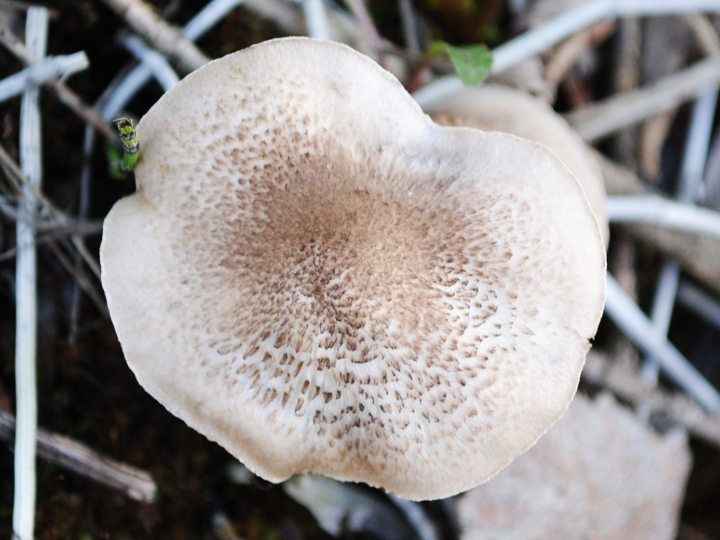
















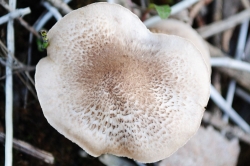
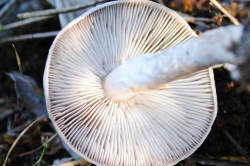
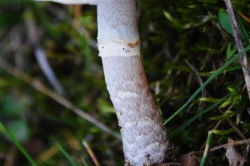
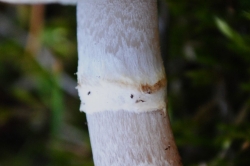
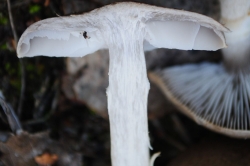
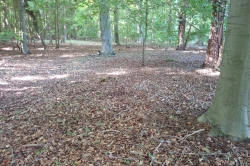
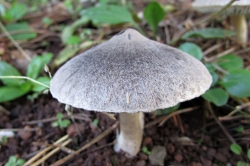





COMMENTS